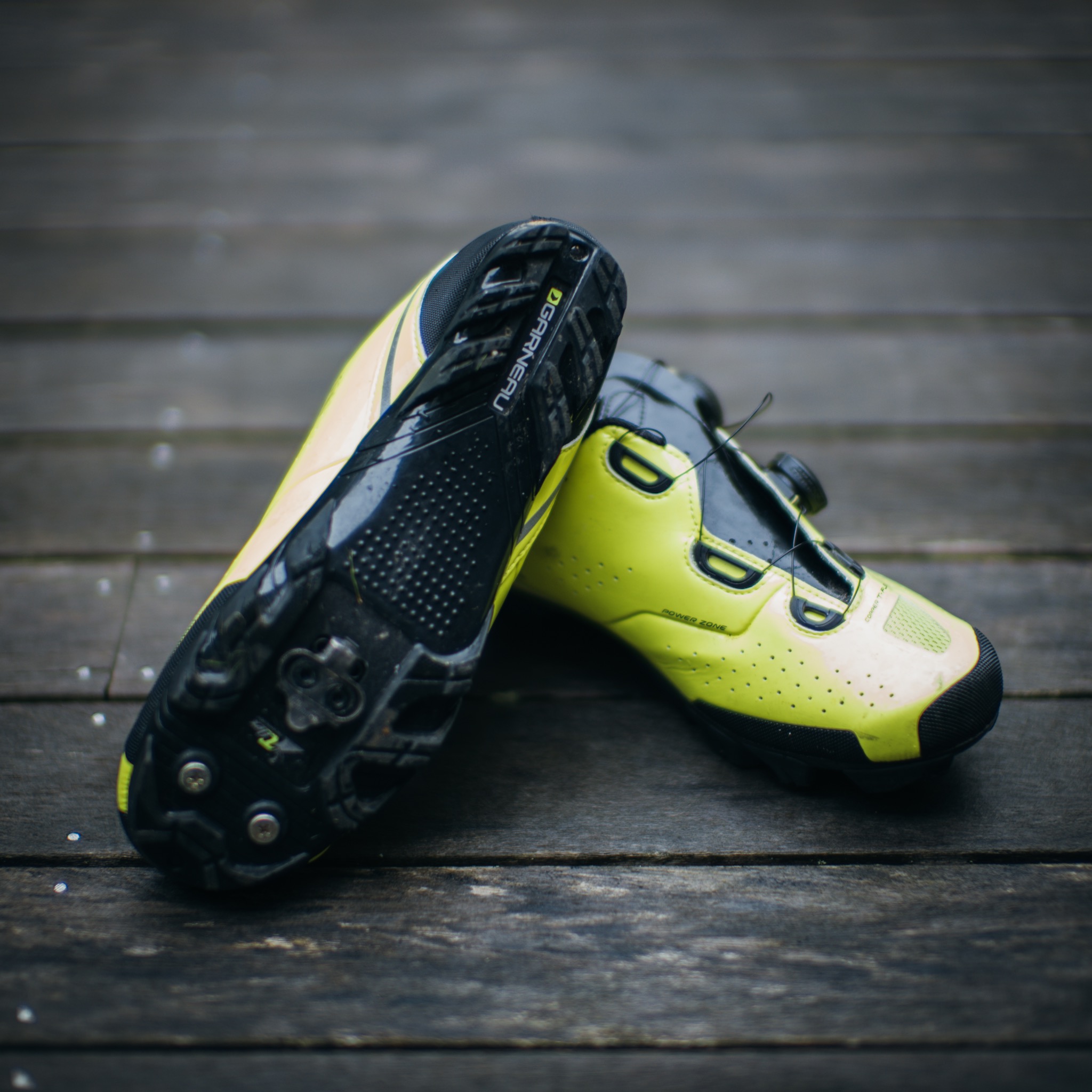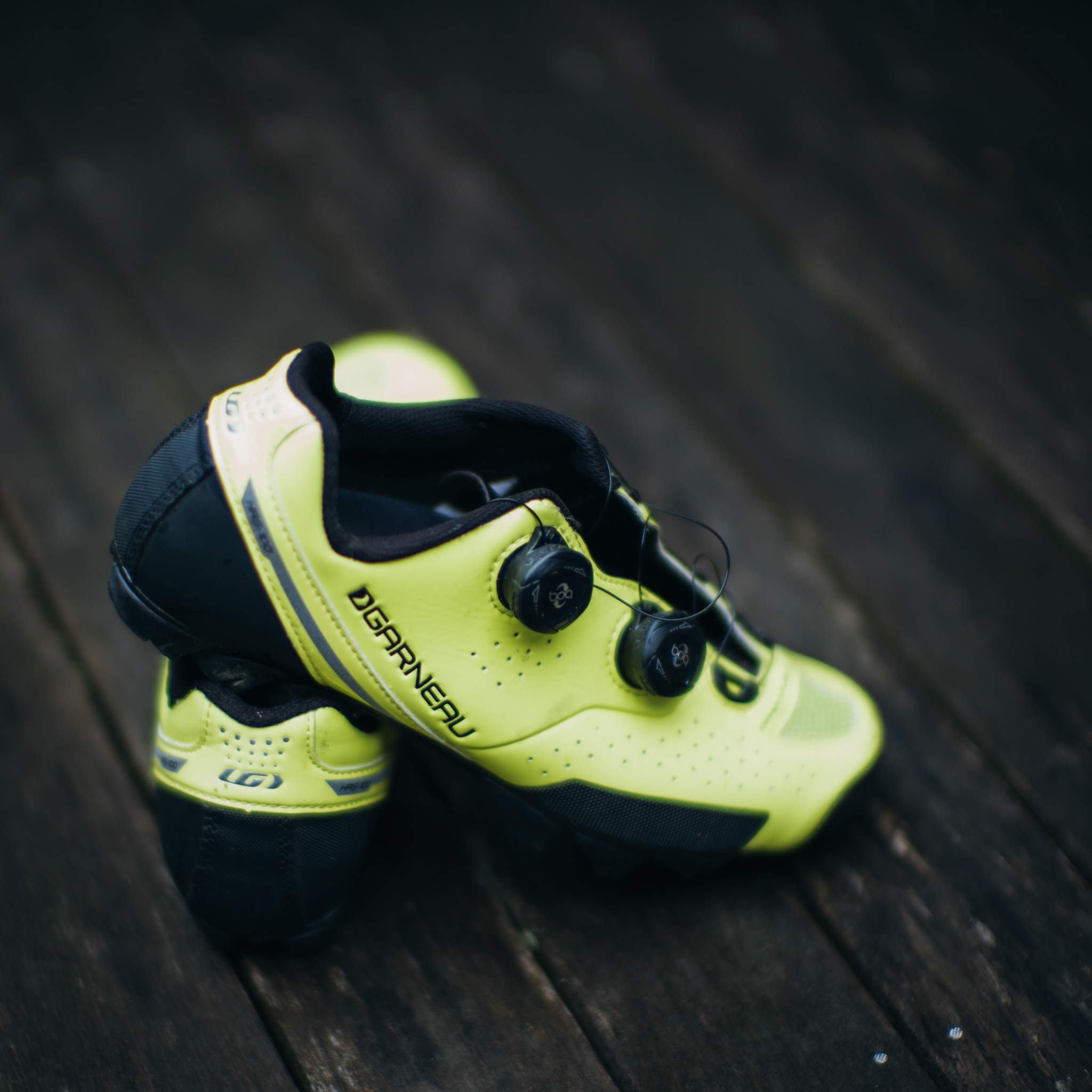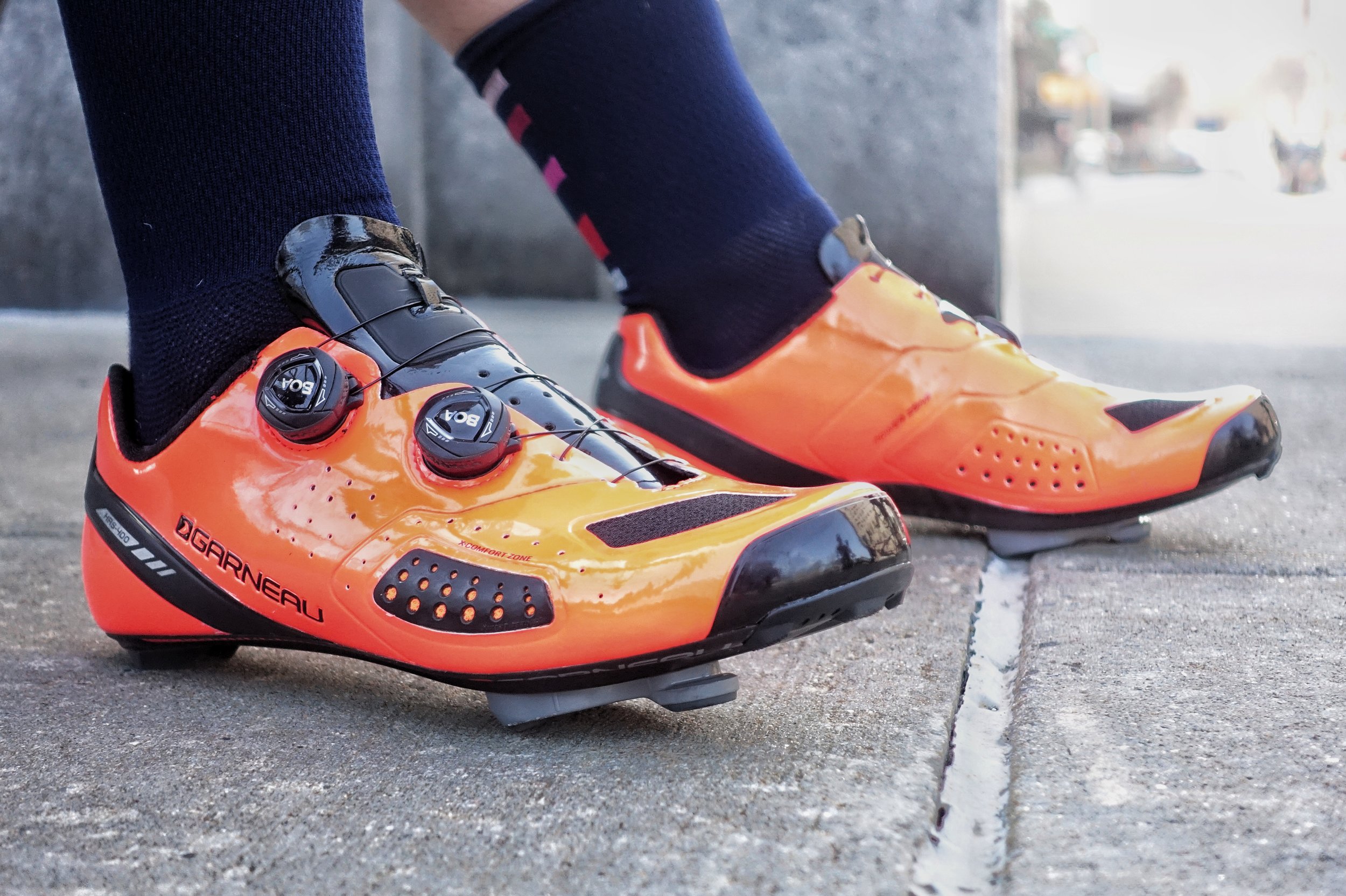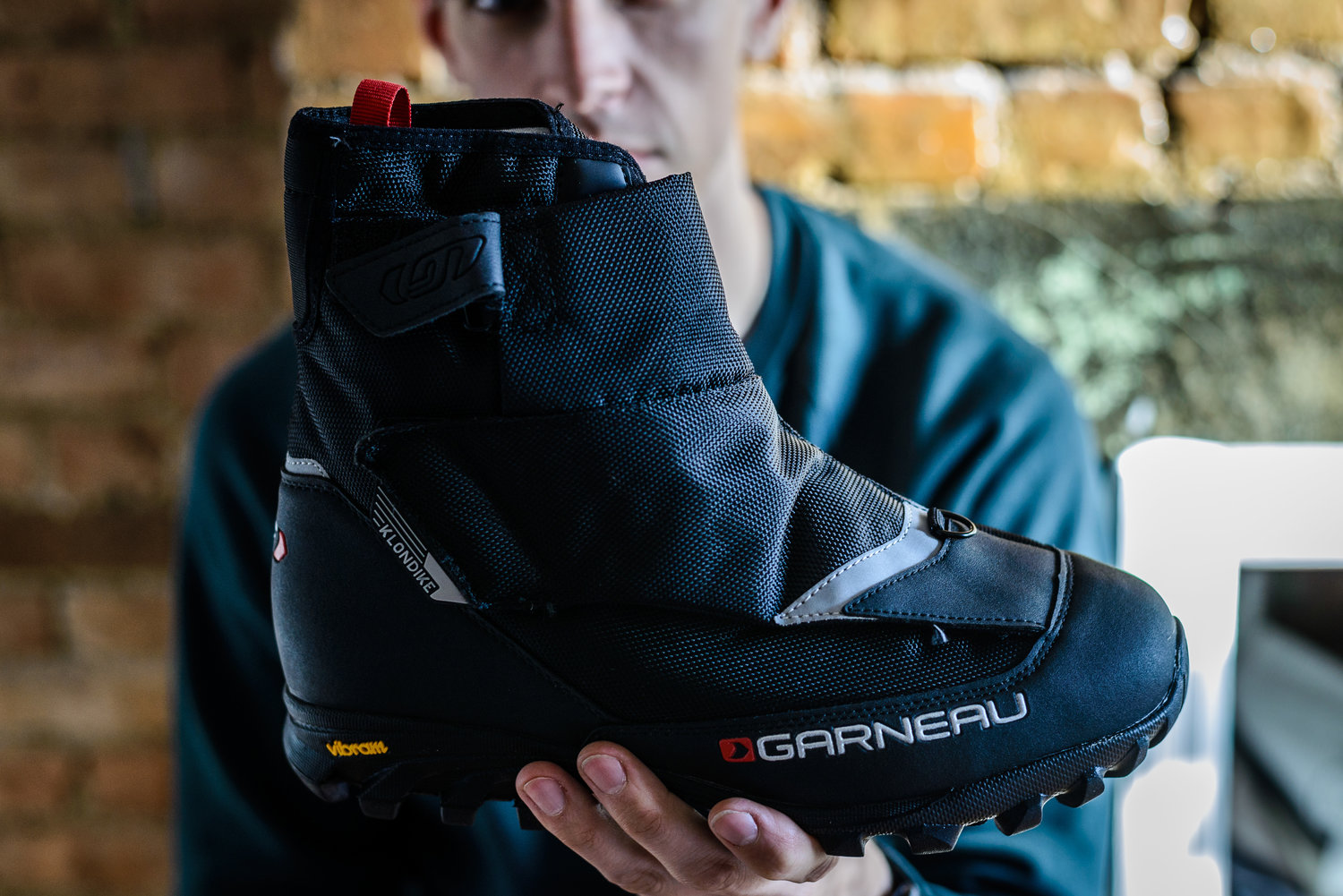Garneau Copper T-Flex Mountain Bike and Cyclocross Shoe Review

In recent months I have been using Garneau's top-of-the-line CX/MTB shoe, the Copper T-Flex. With a number of early season races under my belt, along with plenty of training time, I compiled my thoughts on this latest off-road offering from Garneau.
The basics: Retailing at $325 the Copper T-Flex comes in two colors: stealth-mode black on black on black; and neon yellow with black accents (for a decidedly 2016-season Sven look). Two replaceable Boa IP6-S dials provide retention, one for locking in the heel, and another managing the midfoot and toe box.
The short version of this review is that they're great off-road racing shoes that offer good value, albeit at a high price point. I'd definitely buy them again – even without our awesome #spon discount. That said I do have a few notes for future iterations of these shoes (some of which may have been solved in Garneau's 2018 shoe line, which won plaudits at Eurobike this year) and one DIY tip for anyone racing cyclocross in the Garneau Copper T-Flex.
The Definitely Good
Abrasion-resistant, easy-to-clean upper with "just right" ventilation
In every spot where shoes are prone to abrasive wear, Garneau has placed textured, high-durability material instead of the low-stretch microfiber they have elsewhere in the upper. Just over the toe box, they've got a 1x1 spot of mesh to let air in. I'll report back after the colder races to see if this is too much ventilation, but I'm guessing it'll be fine and am thankful for this feature during these opening weeks of the season.
T-Flex
The carbon composite midsole (I say midsole because the carbon is covered by a full-length plastic plate, to which the rubber lugs are affixed) stops just before where your toes flex. Get it? T-Flex? Nevermind. So while the shoes are stiff through the midfoot, and feel like road shoes when going full-gas, you can Actually Run Fast in them because there's a little bend at the toes.
A couple other benefits. First, the flex makes it easier to balance when you're at the start line, because you're not just digging a stiff plate into the ground, and the lugs can get into the dirt. Second, the heel fit is improved, because your foot can bend naturally where it's supposed to bend, and your heel doesn't want to pop out the back of the shoe when force is applied. Top-end, ultra-stiff shoes from Shimano and Bontrager use an ultra-abrasive material in the heel cup to deal with this. Garneau has something similar, but it's less aggressive, and won't tear up your socks.
Aggressive tread pattern & rubber formulation
No doubt about it, these shoes have traction. The lugs are fat/sharp, clear mud easily, and the rubber isn't so hard that they don't work on slippery, hard surfaces (I'm looking at you, Charm City steps).
The Garneau Copper T-Flex features twin Two replaceable Boa IP6-S dials
The Let Me Persuade You Why This Is Good
Stiff carbon sole
You: "Eh, I don't need the stiffness of the high-end shoe. I'm a Cat 4 racer, who cares."
Me: Yes, friend, you want a full carbon, as-stiff-as-you-can-get-it sole. Why? On-the-bike comfort. If you're only ever riding your bike for 40m, then sure, it's not going to matter that much. But on longer efforts (shredfests, for example), the small cleat-pedal interface on two-bolt systems is going to cause discomfort without a stiff sole to distribute the load.
Of note: a few fellow TBDers who have been riding and racing in the Copper T-Flex found the soles significantly stiffer than what they were riding in the past (i.e. Giro Empires, more value oriented offerings from Garneau). This stiffness took a ride or two to get used to, but they reported that their feet quickly found “home” in the shoes.
Boa dials
You: "I've seen the pros break off Boas in a race – they're not appropriate for cross."
Me: I did have the Boas come loose when I dumped it on a turn at Nittany – but the shoe stayed on and I was able to quickly tighten the dials without losing much time. (Also, I shouldn't have crashed.) They're easy to replace, and the two-way micro-adjustment is helpful mid-race when feet get hot. Plus, MVDP moved to a Boa-equipped shoe this year (no doubt with sponsor pressure), so you should, too.
The Garneau Copper T-Flex shoes after a day spent on the trails at Six Mile Run in New Jersey.
A DIY TIP for the Garneau Copper T-Flex
Sole traction
Shoes that are designed with 'cross in mind typically have some sort of rubber cladding or traction at the midfoot. Shimano's Sphyre series, Bontrager's XXX, Giro VR90 – they've all got textured rubber to give your foot some purchase if you miss the pedal or are intentionally riding with your foot unclipped.
But wait, why ride with your foot unclipped? When you're heading into a forced dismount – if you have time – it's a good idea to unclip your left foot first, and pedal/coast with your midfoot on the pedal (right foot if you are a dirty-side dismounter). Why? It's faster – it always leaves your pedals in the right position for the remount, instead of spinning your pedals around when you unclip. Try it!
Anyway. The Garneaus only have dimpled plastic in the midfoot. This works only just OK, and only in the dry. However, this is fixable: just grab an old, worn-out tubular, cut the tread off, and glue it to the sole. (I prepped mine by shaving the little plastic nubs off, sanding the sole, and then...you guessed it, Vittoria Mastik.)
The soles of the Garneau Copper T-Flex before Clay's DIY solution for improved mid-sole traction
The debatably good
Heel cup fit & finish
Astute followers of the cycling shoe market will note that most of the top-end kicks feature molded, integrated heel cups (see offerings from Specialized, Shimano, and to a lesser extent Bontrager and Fizik if you are scratching your head trying to figure out what I’m describing). The design idea behind these integrated cups is that they get the lugs and sharp edges out of the way of your ankle bones, for fewer self-inflicted bruises and cuts. Further to that, they have the ability to reduce slippage by “locking” onto your heelbone. If (and this is a big if) the cup is perfectly shaped for your foot, you’re in luck – and you have a very sleek-looking shoe to boot. (Groan.) But if the cup hits you in the wrong spot, it makes the shoe entirely unwearable.
The Garneaus, like the Giro VR90s and Sidi Dominators I’ve worn previously, don’t have a pronounced cup – the sole is just kinda...stuck on there. This means it’s more likely to fit a wide array of foot shapes, but also means the form factor is a bit more chunky. And with the T-Flex design, I’ve found heel slip to be nonexistent, rendering the cup design obsolete. More for everyone to love.
The heel cup is not integrated on the Garneau Copper T-Flex but the design provides fit flexibility with good retention characteristics.
Fit Notes
I’d been unsuccessfully wearing 44.5 Giro shoes for the last year, across CX and road seasons – no matter what, they were just too narrow in the toe-box. Races were always fine, but anything over a few hours would cause pain. After a quick break-in period, my 44.5 Garneaus are fitting perfectly – no pain anywhere – suggesting they run true-to-size. To make matters even easier, Garneau provides a handy shoe fit guide to help you find the proper size.
The Conclusion on The Garneau Copper T-Flex Shoes
These are great shoes for racing cyclocross, and can be modified to be even better. I’ll be getting a second pair (because, #crossruinseverythingaroundme) soon. The T-Flex thing really works to provide great fit, reduced heel-slip, and better traction while running...without sacrificing stiffness where it counts.
I mostly like cycling because I like stuff, and I like tinkering. The title for all of my posts here should be, “I made a bunch of mistakes so you don’t have to: [Topic] Edition.”
I’d love to review your product. Say hi: clay@tobedetermined.cc.








Welcome to the first edition of Tire Tech Tuesday, where I’ll be waxing poetic about the many updates in modern bicycle tire technology. This week I’m reflecting on my year spent riding Reserve’s Fillmore valves for tubeless tires.